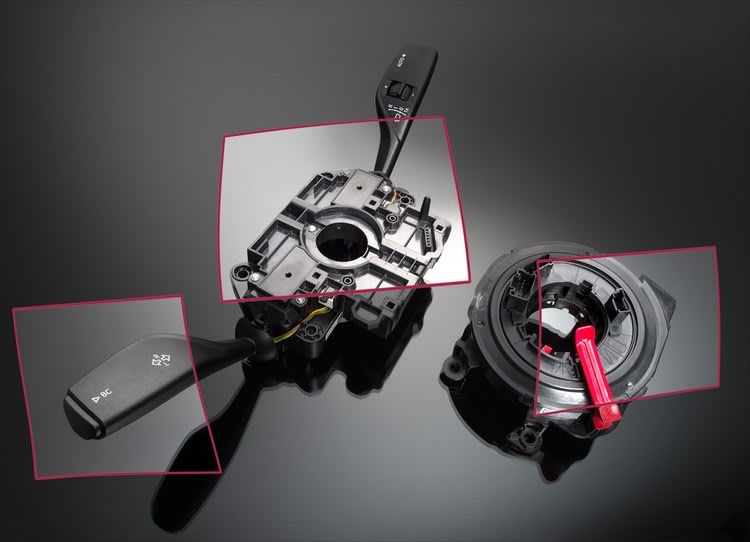 Safety, driving pleasure, esthetics - when you drive a car, it is not just the steering wheel that has a major influence on the driving experience, but also the top column module that connects the steering wheel with the control unit. The French automotive supplier Valeo has now developed a top column module whose housing and levers are made of BASF’s engineering plastics Ultramid (PA: polyamide) and Ultradur (PBT: polybutylene terephthalate). It is around 20 percent lighter than the previous model and benefits from the outstanding surface finish, the good UV resistance and the excellent mechanics of the BASF materials. The top column module is used by the BMW Group in its vehicles with rear-wheel drive for the BMW 3 to 7 series.
Safety, driving pleasure, esthetics - when you drive a car, it is not just the steering wheel that has a major influence on the driving experience, but also the top column module that connects the steering wheel with the control unit. The French automotive supplier Valeo has now developed a top column module whose housing and levers are made of BASF’s engineering plastics Ultramid (PA: polyamide) and Ultradur (PBT: polybutylene terephthalate). It is around 20 percent lighter than the previous model and benefits from the outstanding surface finish, the good UV resistance and the excellent mechanics of the BASF materials. The top column module is used by the BMW Group in its vehicles with rear-wheel drive for the BMW 3 to 7 series.“Our steering columns are based on a highly developed, integrated design and therefore adapt perfectly to the particular car interior architecture,” says Jochen Foeßel, who is responsible for part optimization and plastic injection molds at Valeo. “In order to create a stable, functional and visually appealing top column module, we were able to select exactly the right materials from BASF’s wide range of engineering plastics as well as benefit from BASF’s service covering all aspects of component design, material development and processing.” For the indicator and windshield wiper levers Valeo uses the surface polyamide Ultramid B3EG10 SI (SI= surface improved). For the two-part core module it employs the PBTs Ultradur B 4520 and Ultradur B 4300 G4. The latter is processed by the company Buck Spritzgussteile Formenbau, Flachslanden, Germany, using the MuCell process.
Surface polyamide for levers combines mechanics and esthetic appeal
The levers for the indicators and windshield wipers are noted for the particularly high-quality surface finish and stability of Ultramid B3EG10 SI from BASF. The surface polyamide, which is highly filled with 50 percent glass fibers, offers an ideal combination of mechanical and visual properties. It is therefore used in surface components which not only need to look attractive, but must also be extremely stable and UV-resistant. The material was originally developed for the furniture industry, where it is now used in numerous design and office chairs. “We were initially slightly surprised that BASF offered us a material developed for furniture,” says Jochen Foeßel. “But we were won over by the homogeneous, shiny surface finish as soon as we saw it. And the excellent mechanics and UV resistance were confirmed in the tests we did.” Valeo carried out the tests on the resistance of car interior components in accordance with DIN EN ISO 1043-1/GS 93016.Tailor-made Ultradur grades for two-part top column module housing
The two-part core of the top column module is made of different Ultradur grades. The lower carrier housing made from Ultradur B 4300 G4, which is reinforced with 20 percent glass fibers, is manufactured by the company Buck Spritzgussteile Formenbau using the MuCell process. In this physical foaming process, nitrogen is added to the polymer melt during injection-molding, which leads to the formation of a foam structure. As a result, the weight of the component is reduced by around ten percent and the dimensional stability is increased without any adverse effect on the high rigidity and excellent chemical resistance of the material. The upper top column module housing, on which the steering wheel is mounted, is made from the unreinforced PBT Ultradur B 4520. It is noted for its low water uptake and therefore high dimensional stability. Moreover, it combines an appealing surface finish with excellent dimensional stability at high temperatures. This well-balanced combination of properties is the basis for ensuring that the steering wheel can be mounted safely on the top column module.



